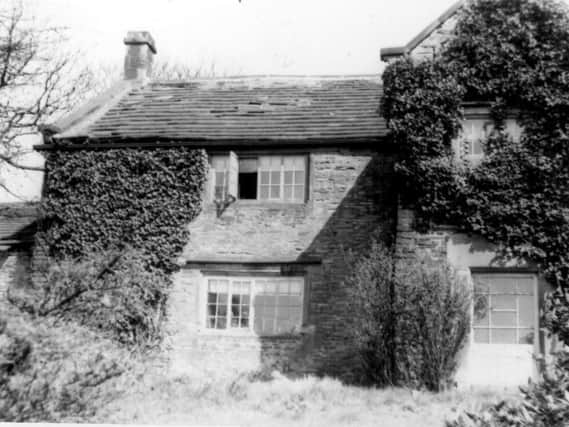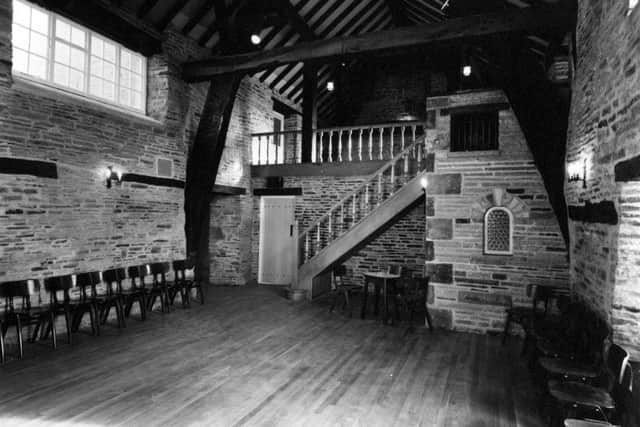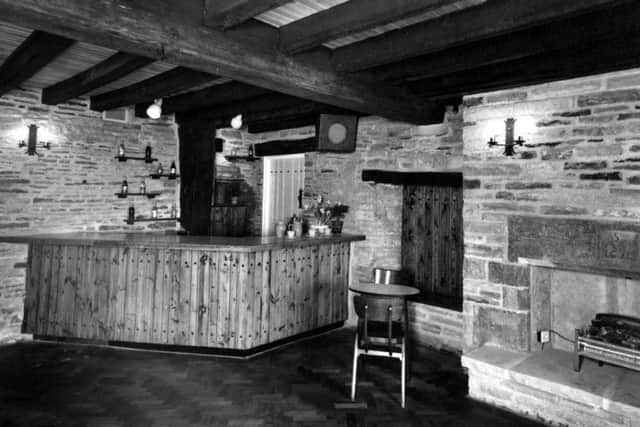Ancient gem among Sheffield's high-rise flats


It’s one of Sheffield’s oldest surviving buildings, a farmhouse and barn that was almost knocked down when the Herdings estate was built but then became a youth club.
To get to Herdings Community and Heritage Centre on Morland Road, climb steps past a boxing gym in a modern shopping area. Suddenly, you spot the stone building in a corner.
Advertisement
Hide AdAdvertisement
Hide AdInside, although the building has been partly converted for modern users and the youth club walls are decorated with vivid pop star murals, thick stone walls, an open fireplace and beams can still be seen.


The cruck barn still has its instantly recognisable curved wooden roof supports and an upstairs galleried area.
When you step into the back garden, recently cleared by youngsters from Woodthorpe Youth Club, you’re at the original front of the building.
It will be open to admire during Heritage Open Days in September.
Advertisement
Hide AdAdvertisement
Hide AdBuilt on Saxon foundations, the farmhouse dates back to possibly the 13th century and at least 1675. That date was once inscribed in stone over the doorway (it’s now disappeared).


Families who lived there included Rollinsons, Scrivens, Jenkins and Bagshawes.
In 1958 the city council intended to destroy the buildings to create the Herdings estate but an outcry saved it, although it was compulsorily purchased.
Farmer EW Marsh said: “I’m fed up. I have been farming for the country all my life, and now I’m being turned out of my farmhouse, the only surviving link with our former 65-acre farm.”
Advertisement
Hide AdAdvertisement
Hide AdIn his book Cruck Buildings, B Bunker recalls visiting the farm on the day before the barn was due to go. He wrote: “On that lovely morning swallows were skimming in and out of the barn, feeding their young in the nests on the crucks, as their ancestors had done for over a thousand years.


“The foreman of the demolition gang, whose noisy machines were being operated up to the outside walls, smilingly silenced the machines every time they saw a swallow returning with a beakful of food.
“In the Tudor-walled farmhouse the farmer was sadly making final arrangements to leave the farmhouse which he loved, his near-blind bewildered sheepdog keeping close.”
Sue Dixon, community and business development coordinator for charity Reach South Sheffield, formerly Gleadless Valley Community Forum, said: “It’s a beautiful building that’s under-utilised. We run courses for people who are unemployed or on low incomes to get added skills and we run an older people’s club on a Tuesday.
Advertisement
Hide AdAdvertisement
Hide Ad“There’s a youth club run by Sheffield Futures twice a week and Sheffield Young Carers use it.


“We wanted to try to open it up for people to look at and we want to hire it out for evening and weekend events.”
The centre was previously known as One For All and Herdings Youth Club before that. Reach South Sheffield took over the building when the city council decided it couldn’t afford to keep it going any more.
The youth club and summer activities suffered cutbacks.
In February, Reach South Sheffield held a consultation on the building. Local people said they want to keep it going and explore its history.
Advertisement
Hide AdAdvertisement
Hide AdWith the help of community archaeologist Sally Rodgers from Heeley City Farm and heritage campaigner Joy Bullivant of the Timewalk Project, Sue aims to apply for Heritage Lottery funding to do that.
On September 10 and 11, visitors can explore and learn more about its history.
Chamber folk group The Beekeepers will play traditional and early English music and Carmel Page will read stories written by a Norton man, Sidney Oldall Addy, who collected local folklore and fairy stories.
Anyone who has stories about the building can call 0114 235 8642 or email [email protected]